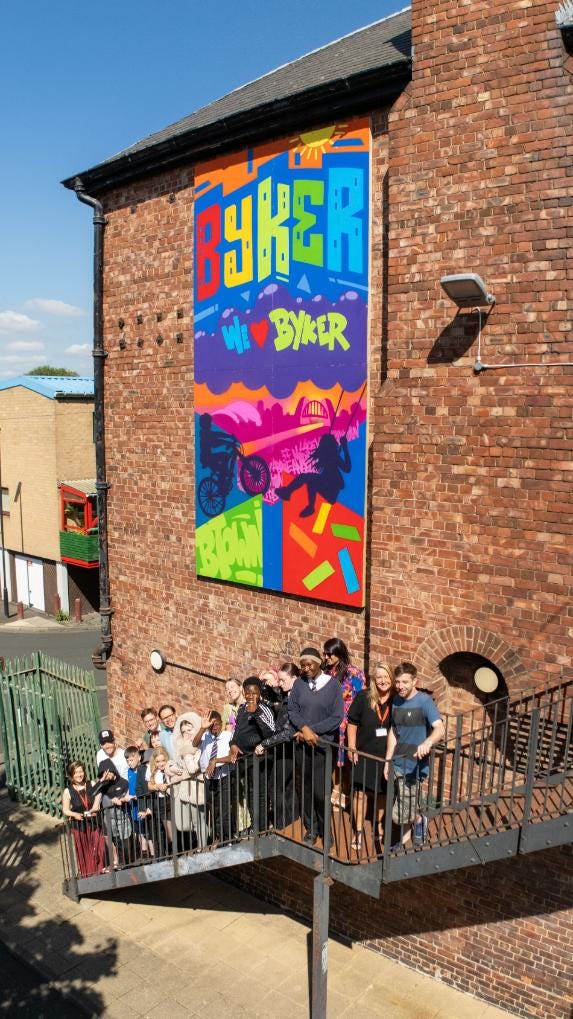New mural captures the spirit of Byker
Artwork adds to architecturally celebrated Tyneside housing estate. Tony Henderson reports
Youngsters have created a street art image to enhance the internationally-famous housing development they call home.
The project has been led by local street artist MarkOne87, with the artwork decorating the gable end of the Northern Stage building on Brinkburn Street in the Grade II* listed Byker Estate in Newcastle.
It is part of a project facilitated by Karbon Homes, which owns and manages 1,800 homes on the estate, and funded by Historic England.
Delivered over the last six months in collaboration with specialist youth service Foundation Futures, the project has given young Byker residents a creative outlet to express what the estate means to them.
Tom Frater, North East and Yorkshire regional director at Historic England, said: “Historic England is proud to support this inspiring project through our History in the Making programme.
“The Byker Estate holds a special place in the modern history of Tyneside and in our national architectural heritage as one of the most significant examples of 1960s social housing design, something reflected in its high Grade II* listing.
“This community-led street art initiative demonstrates how young people can engage with and celebrate their local heritage in creative and meaningful ways. The project honours Byker's remarkable social history whilst empowering the next generation to become active guardians of their architectural legacy.”
Victoria Keen, Karbon Homes’ Place Lead, said: “It’s great to see the final artwork on display, which recognises the history of Byker through street art and the young, local artists who helped create it.
“It’s a fantastic representation of the Byker community. The project plays an integral role in our Thriving Byker Strategy to increase a sense of pride in the estate and bring to life its unique heritage.
“Community initiatives like this are part of Karbon’s place-based approach to support local growth and enliven neighbourhood spaces. Historic England’s funding has given the young people of Byker a brilliant opportunity to create their own piece of history for others to enjoy.”
The £14,650 project started with a series of educational art workshops for the young residents, delivered by community partners at the Farrell Centre at Newcastle University and Northern Cultural Projects CIC and exploring the past and present of the estate’s design.
The youngsters took part in seven sessions with local graffiti artist and ELEMENTS street art festival lead artist MarkOne87, using what they had learnt in the workshops to develop concepts for the public art.
Georgia Bates, youth learning and community specialist at Foundation Futures, said: "Byker isn’t just a place, it’s a community, made up of good people who look out for each other and care. That’s the real Byker, and that’s what this artwork is all about.
“It represents both the people who shaped this community and what it means to grow up here today. Byker has a past to be proud of and a future to believe in.
"A massive thank you to MarkOne87, who’s been brilliant from start to finish. He didn’t just show up and paint something for them, from day one they’ve been involved. He listened, he made space for their stories, creativity and pride for the area and turned those ideas into something powerful, something that truly reflects them and this place.
“And a big thank you to Karbon Homes and Historic England, for backing this project and believing in our young people.”
A number of other pieces will be displayed in other locations across the estate.
Historic England’s grant, a part of its ‘History in the Making’ programme, has enabled the continuation of an existing partnership between Karbon Homes and the ELEMENTS festival, which has already seen several street art boards and murals created by and installed in the community.
The project is one of 21 creative youth-led place marking projects that have received funding through ‘History in the Making’, which enables underrepresented young people in England to research, discover and mark local histories.





